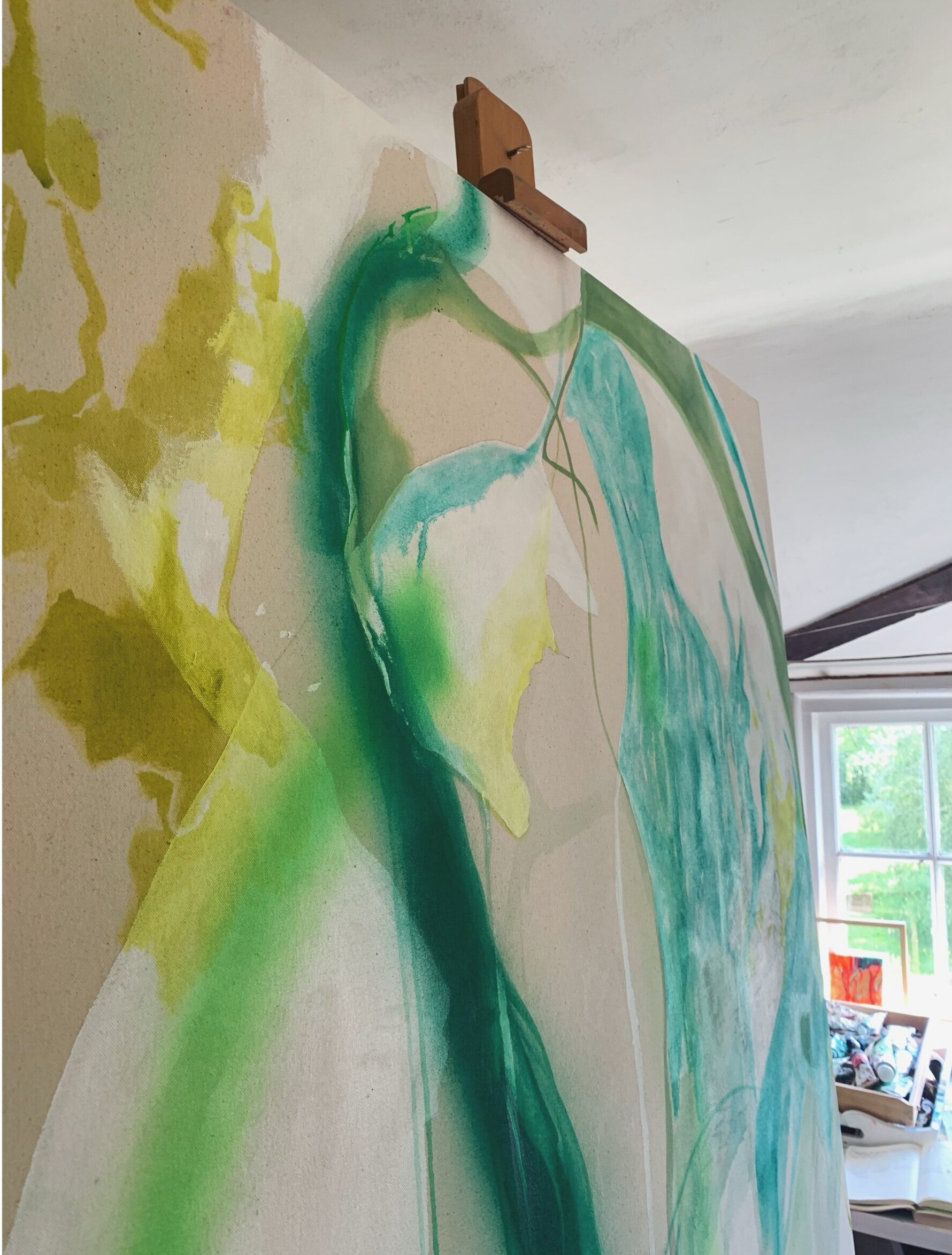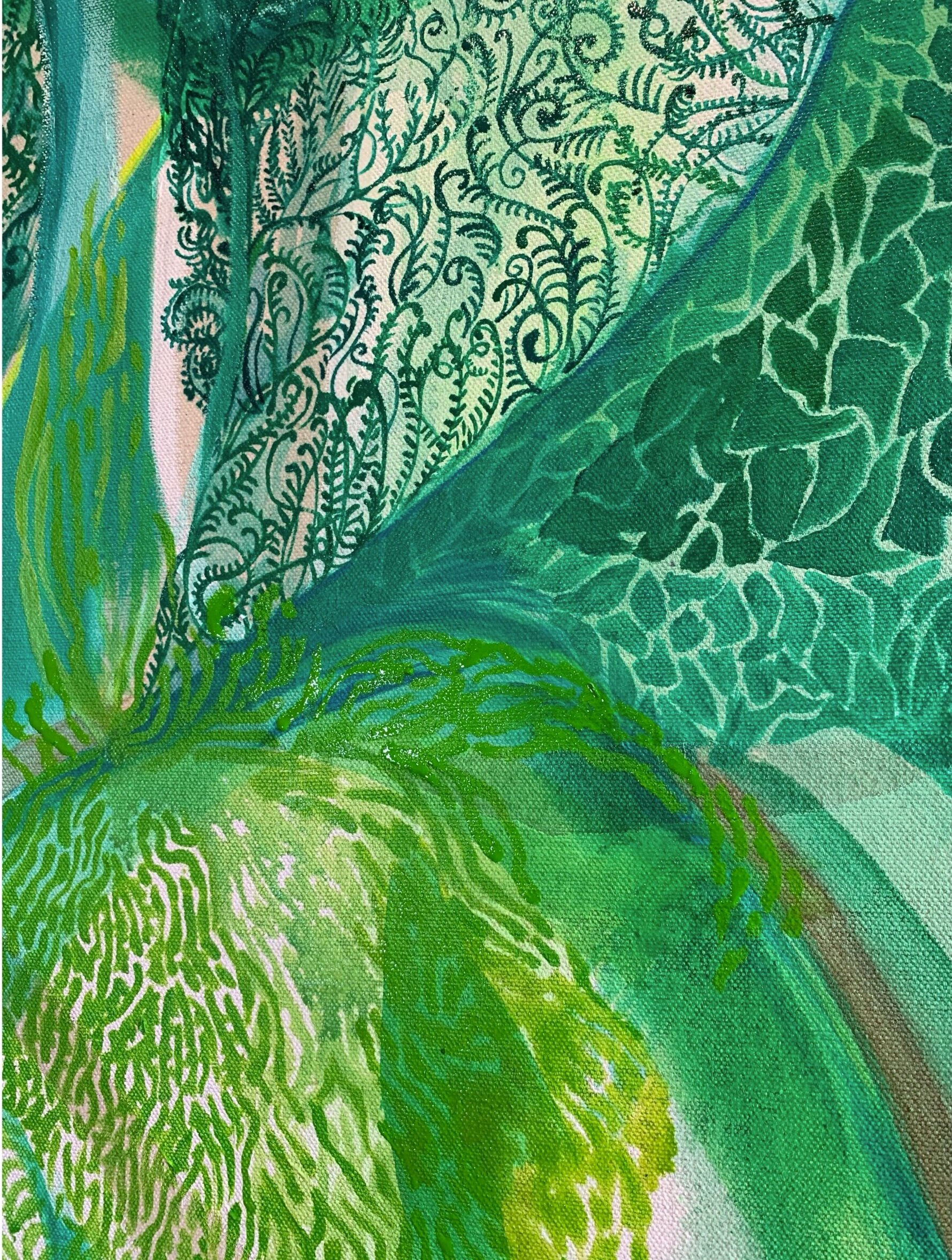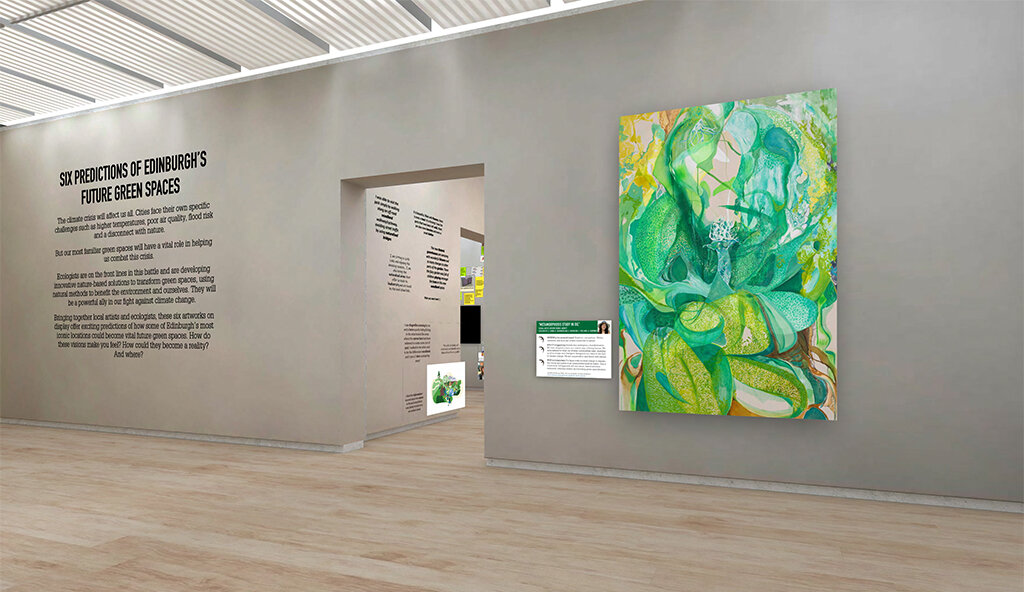Metamorphosis in oil
Introducing Metamorphosis study in oil, a new painting inspired by the British Ecological Society’s proposed nature based solutions. These solutions were launched in a landmark report earlier this year, which assessed their potential across a range of ecosystems, from coastlines to the built environment, to protect nature in a way that can help tackle climate change, while also benefitting biodiversity and improving human wellbeing.
“Nature can be our ally in tackling both climate change mitigation and adaptation, through processes such as carbon sequestration, greenhouse gas emissions reduction, flood risk reduction, ecologically connected landscapes and better urban environments.” - Professor Yadvinder Malhi CBE FRS President-Elect, British Ecological Society
The painting was commissioned by the British Ecological Society for a digital exhibition organised as part of Edinburgh Science Festival. Along with five other artists, I was invited to create an alternative vision of what our urban green spaces might look or feel like in the future.
As part of the commission, I had the opportunity to speak to different ecologists and social scientists who gave me a fascinating insight into the number of stakeholders and stages involved in getting any initiative off the ground, particularly now that a myriad cultural and social values are being considered alongside the previous ‘ecosystem services’ model in order to inform policy decisions. Sensitivity to the different needs, uses, perceptions and experiences of landscape was a common theme in our discussions. Collaboration and inclusion were two other words I heard frequently, with everyone I spoke to highlighting the need to spend the time genuinely listening to what the community needs in their local area so as to avoid parachuting in with nature based ‘solutions’ that actually become problems, exasperate existing tensions or fall into the trap of green-gentrification.
I really valued this detail and breadth of opinions as it gave me the opportunity to ground some of the concepts I have been exploring in my recent work with the real-world experiences of those working on the ground to implement some of the new policies. Through conversations with ecologists and social scientists Abi Gardner at Nature Scot, Bethany Chamberlain at the British Ecological Society, Chris Pollard at Forest Research, Christian Dunn at Bangor University and Donya Davidson at the Scottish Wildlife Trust, what emerged for me was a curiosity about the role that individual city-dwellers can and must play in the integration of nature based solutions. What leaps of imagination do we need to take in order to adapt to these changes? How must we shift our perceptions of nature so as to create room to allow new nature-based interventions in our cityscapes to take hold successfully? I wondered how these ecologists, who are so passionate about nature based solutions, can genuinely and meaningfully bring the public along with them on this potentially transformational journey.
“One of the trickiest proposals for local urban communities to get on board with is probably the idea of protecting brown-field sites rather than building on them. They are valuable carbon-sinks and often rich in biodiversity, with rare plants and insects thriving on the land. We need to work with the local communities to co-write new stories about these site and to see them in a different light.”
This line of enquiry led me to create Metamorphosis study in oil as a starting point or question about the role that connection and empathy with nature plays in our battle against the climate crisis. I wanted to focus in on the stages of becoming attuned with nature before the point of supporting and championing the proposed solutions themselves, because until we see ourselves as nature, we simply will not do everything that is needed to protect it. In developing the painting, I considered the conceptual and emotional shifts we need to go through in order to strengthen our experience of nature connectedness and to be better equipped to adapt to all of the changes brought on / necessitated by the climate crisis. This particular area of my research was inspired by the ‘pathways to nature’ followed by organisations running public engagement programmes such as Nature Scot and Nature Wales, as well as the fascinating nature connectedness research taking place at the University of Derby. I have also been greatly inspired by speakers on the Guardians of the Forest course, which has expanded my thoughts about experiential and embodied knowledge.
In the final painting, glimpses of figures move throughout an intricate landscape of moss, lichen and roots. Boundaries are blurred between the botanical world and the human world, with figures and forms expressing moments of delight, integration, observation and protection. It is an exploration of what adopting a more eco-centric way of living might feel like as we stretch our understanding of what it means to be human. In preparing for this work I studied a life model practicing interpretative dance, with the final painting containing references to numerous figures each drawn from the same individual as she leapt, crouched, twisted and twirled. I also collected lichen and moss specimens for study under microscope, diving into minute forests of greens and blues to rediscover the everyday on an entirely new scale.
“Peatlands are our rainforests. Get your wellies on, step of the path and explore them - go on an adventure! There are so many amazing stories that we can tell about peatland and it’s time to rewrite the negative bog narrative… They deserve our reverence; it is thrilling to be walking on centuries of spongy history as you explore peatland.”
I have titled this a ‘study in oil’ because it is not a finished painting or statement. It is more an opening question, an early expression of some of the intriguing concepts that emerged for me out of this art/science collaboration that I intend to develop further through research and experimentation.
Read a short interview about my experience of working with scientists here and enjoy the full exhibition with all six commissions (selecting ‘enter fullscreen’ for the best experience) here at the Edinburgh Science Festival until 11th July.






